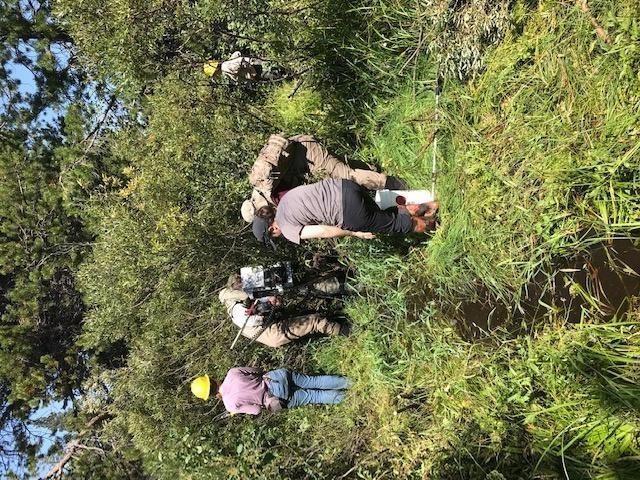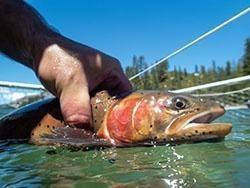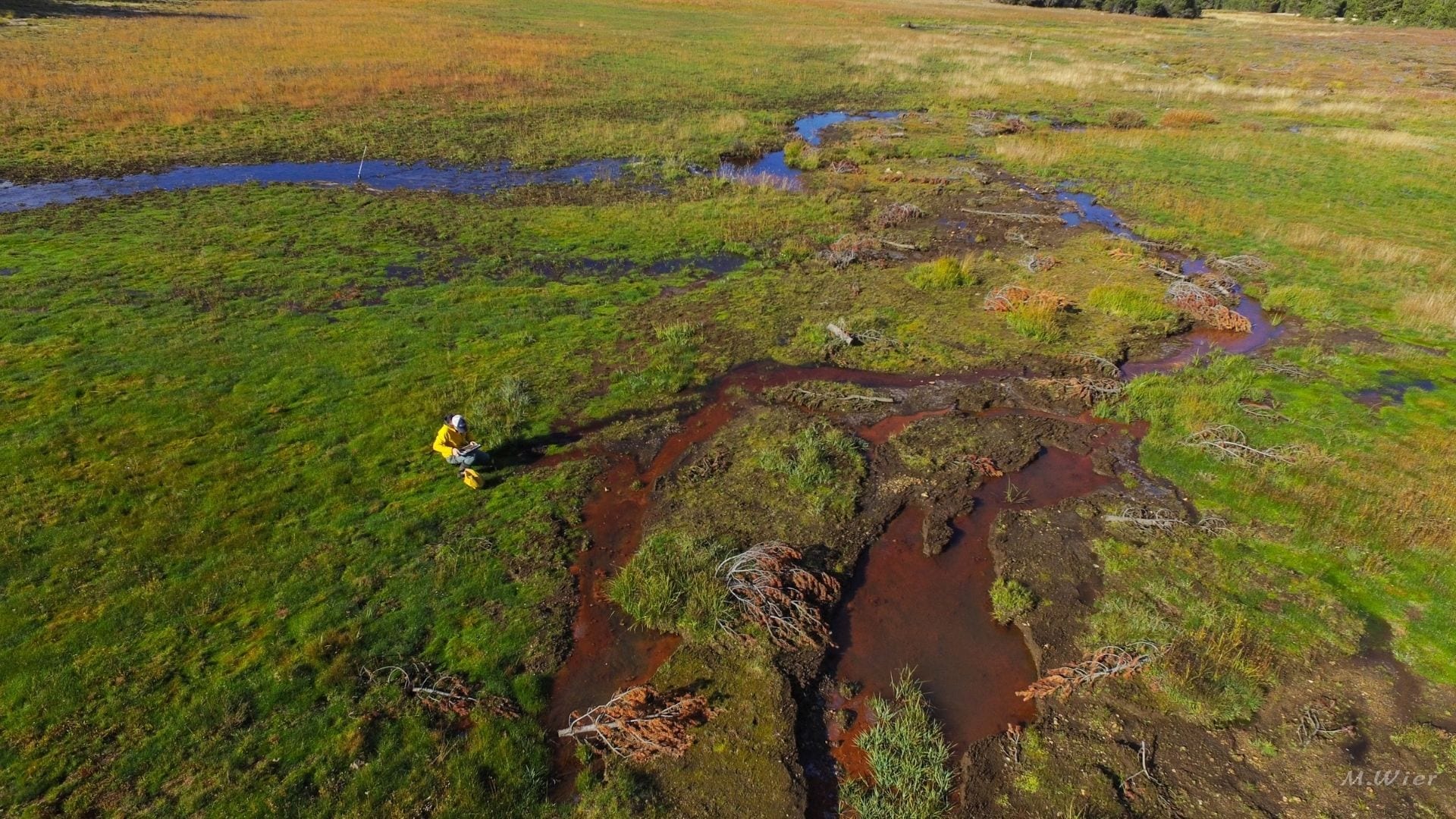
Aqua Bounty Exposes Risks of GMO Aquaculture
GMO aquaculture plant regularly:
Regularly discharges high levels of ammonia into the surrounding watershed and violates environmental regulations;
Keeps its GE fish growing in toxicological water contaminated with unsafe levels of fiberglass particles, ammonia, and decaying corpses of the GE fish who could not survive such inhumane conditions;
Has had instances of aerosolized hydrochloric acid contaminating the facility along with improper handling of other caustic chemicals and disregarding basic worker safety;
Has routine containment breaches and disposes of their mortalities in easily accessible outdoor dumpsters where wild animals scavenge, risking potentially bringing GE fish into the nearby effluent.
AquaBounty’s behavior isn’t surprising. Their actions follow how Big Food companies operate in the U.S. food system; for-profit and at the cost of people and the environment. It is imperative to put the truth about AquaBounty practices in the light, as the impact of their product is of grave concern for water and wild Salmon - both life-giving elements in river and ocean ecosystems globally.

Meadow Restoration in Faith Valley
Stream restoration projects require a variety of tools and tactics. Sometimes you use a trowel, and sometimes a bulldozer.
In trout and salmon streams where water quality or habitat are highly degraded, you are more likely to need the latter. But when you bring in the heavy machinery, what happens to the fish living in that section of the stream?
Often, the project manager is required to relocate as many of the resident fish as is possible before the work begins. The goal is to cause as little harm as possible to the fish and to ensure that none remain in a stream channel that has had its flow diverted, as was recently necessary for the Faith Valley Restoration Project.

Wild Trout Agency Monitors Drought Habitats
As holiday visitors vacated the Stanislaus National Forest at the conclusion of the long Fourth of July weekend, the California Department of Fish and Wildlife’s (CDFW) Heritage and Wild Trout Program moved in.
Four team members from the statewide program – Environmental Scientist Allison Scott, scientific aids Aaron Sturtevant and Stew Sloan, along with new program leader Farhat Bajjaliya – set up camp within the border region of Alpine and Stanislaus counties in the northern reaches of the Eastern Sierra.

Electrofishing the American River
Monitoring in 2022 occurred in the first two weeks of September and Steve Schwartzbach participated as a volunteer from trout unlimited in the first day’s monitoring on the south Fork of the American River at 30 Milestone road. If you will recall, the first week of September was a week when a vast dome of high pressure settled over California producing record high daily temperatures. It seemed like a good day to be on a river, however ankle deep was not the best depth for working in hip waders
Fish species recovered during our first pass it seemed to me included primarily Rainbow trout, and Sacramento Suckers. While the complete results of the 2022 survey are not yet available we have the 2017 report results to compare. That report showed that the South Fork American below the project 184 diversion was the richest site in rainbow trout with 3,589 trout per mile estimated and 33.9 pounds of rainbow trout per surface acre. Data for other sites are as follows: Alder Creek (1,810 trout/mile and 74.6 lbs/SA), Silver Fork (1207,and 19.7) Pyramid Creek (1,479 and 6.5), Echo Creek (354 and 11.8) and last was Caples creek which had zero Rainbow Trout.

El Dorado Chapter Aids Fish Rescue
On Wednesday, September 7, 2022, members of the El Dorado Chapter of Trout Unlimited (EDTU) met with Eldorado National Forest (ENF) biologists and their interns at a restoration project in Calf Pasture Meadow. Our goal was to relocate trout from an unnamed tributary downstream to Bassi Creek. The stream was to be impacted by the meadow restoration.
ENF fish biologist, Maura Santora, handled the electro-shocker for the first segment of the project, followed by ENF fish biologist Jeff Mabe, swapping places with her. Soon the interns had an opportunity to handle the electro-shocker.
As you can see, the narrow tributary was clogged with willows which inhibited the use of nets to capture the stunned trout. The path to the trout had to be cleared by the interns using loppers to open the waterway. Later, a sawyer was called in to expedite the clearing. The team developed a bucket brigade to carry the fish downstream to the main part of the Bassi Creek and refill the homer buckets with fresh water. The team worked for roughly 6 hours to relocate these brook trout.
There was still approximately 100 yards of the tributary to shock which was left for the next day. The interns did a great job of handling all aspects of this fish rescue. The team had relocated roughly 60 small brook trout.
Calf Pasture Meadow Restoration
Work on the Calf Pasture Meadow Restoration Project began on Wednesday, August 31st and will continue for 4 to 5 weeks to restore approximately 30 acres of degraded meadow habitat. Calf Pasture is located in the Van Vleck and Tells Creek area on the Pacific Ranger District and was acquired by the Eldorado National Forest in 1984. The meadow is highly degraded due to the effects of intensive logging and grazing dating back to the 1800s and from trail incision along the Red Peak Trail.
"Partnerships with American Rivers, and the National Fish and Wildlife Foundation, along with help from a number of volunteer organizations are making it possible to get this important restoration work done," said Forest Supervisor Jeff Marsolais.
The project goals include:
-Restoring approximately 30 acres of degraded meadow habitat to benefit aquatic- and meadow-dependent species.
-Increasing water storage capacity and restoring meadow-floodplain connectivity.
-Reducing stream water temperature and increasing stream base flows and moderating peak flows.
-Reducing conifer encroachment in the meadow.

Lahontan Cutthroat for Lake Tahoe
The Lahontan National Fish Hatchery Complex in Gardnerville, Nev., began stocking 100,000 catchable, Lahontan cutthroat trout into Lake Tahoe June 1 and will continue stocking throughout the summer as conditions allow.
The stocking is part of a multiagency and tribal cooperative effort to reintroduce the Tahoe Basin’s native trout species and expand recreational fishing opportunities to anglers. The partners involved are the U.S. Fish and Wildlife Service (USFWS), California Department of Fish and Wildlife (CDFW), Nevada Department of Wildlife (NDOW), USDA Forest Service Lake Tahoe Basin Management Unit (USDA LTBMU), Tahoe Regional Planning Agency (TRPA) and the Washoe Tribe of Nevada and California.

Pines to Pyramid
The Truckee River, altered and damaged by well-meaning people decades ago, is being restored to something more closely mirroring nature’s intent. Conservationists have spent millions restoring miles of the lower river downstream of Reno. They have cut new meanders into the river channel, allowing nourishing floodwaters to spill naturally over the land. Wetlands and riverside forests are being cultivated and fish and wildlife flourish once again.
Another success story lies with Nevada’s state fish, the Lahontan cutthroat trout. Decades of work by biologists are paying off in a promising way, with the fish now spawning naturally up the river from Pyramid Lake for the first time in nearly 80 years.
Is Your Contact Information Up to Date?
Many of our members do not have current contact data in their TU profile. Some state they will accept e-mails but do not provide and address. As a result you may not be receiving our notifications of events and activities.
Members can call TU at 1-800-834-2419 and update their data. You can probably review your profile at the same number. Alternately you can e-mail your complete contact listing to trout @tu.org. You can also give your data to one of our officers and they will edit your file.

Lahonton Cutthroat at Echo Lake
California anglers looking to target the native but elusive Lahontan cutthroat trout may want to put Echo Lake in El Dorado County on their summer itinerary.
For the past several years, the California Department of Fish and Wildlife (CDFW) has managed the deep blue waters of Echo Lake exclusively as a Lahontan cutthroat trout sport fishery.

Sierra Meadows Partnership
The greater Sierra Nevada region is the source of more than 60 percent of California's developed water supply. It also encompasses a rich variety of natural areas, supporting 50 percent of California’s plant species and 60 percent of the state’s animal species. Sierra meadows cover less than 2 percent of the overall Sierra-Cascade landscape, but they are biological hotspots that sustain the headwaters of several major California water sources.
Trout Unlimited is partnered with California Trout and others in the Sierra Meadows partnership. In 2016— in the Sierra Meadows Partnership—The Sierra Meadows Strategy for restoring and protecting our state’s Sierra Nevada meadows was officially released in 2016 after two years of rigorous scientific study by the partners. A key piece of CalTrout's source-waters-to-sea approach to combatting the effects of drought and climate change, this strategy developed among a broad coalition of conservation partners aims to restore and conserve meadows throughout the Sierra Nevada, protecting a major source of our state’s water supply and critical habitats to fish and other species. Read More
Photo by Mike Wier
Page 2 of 4
